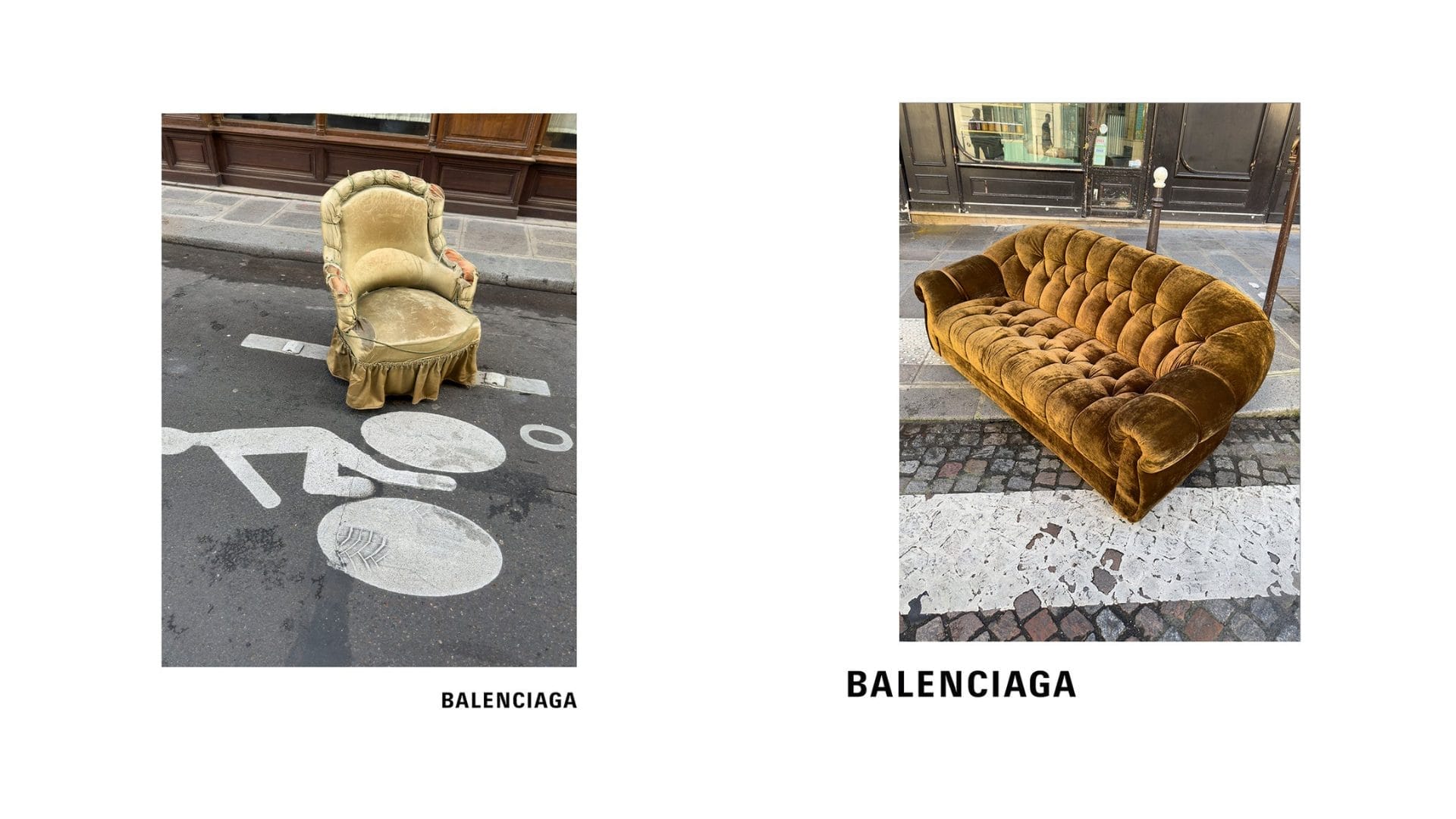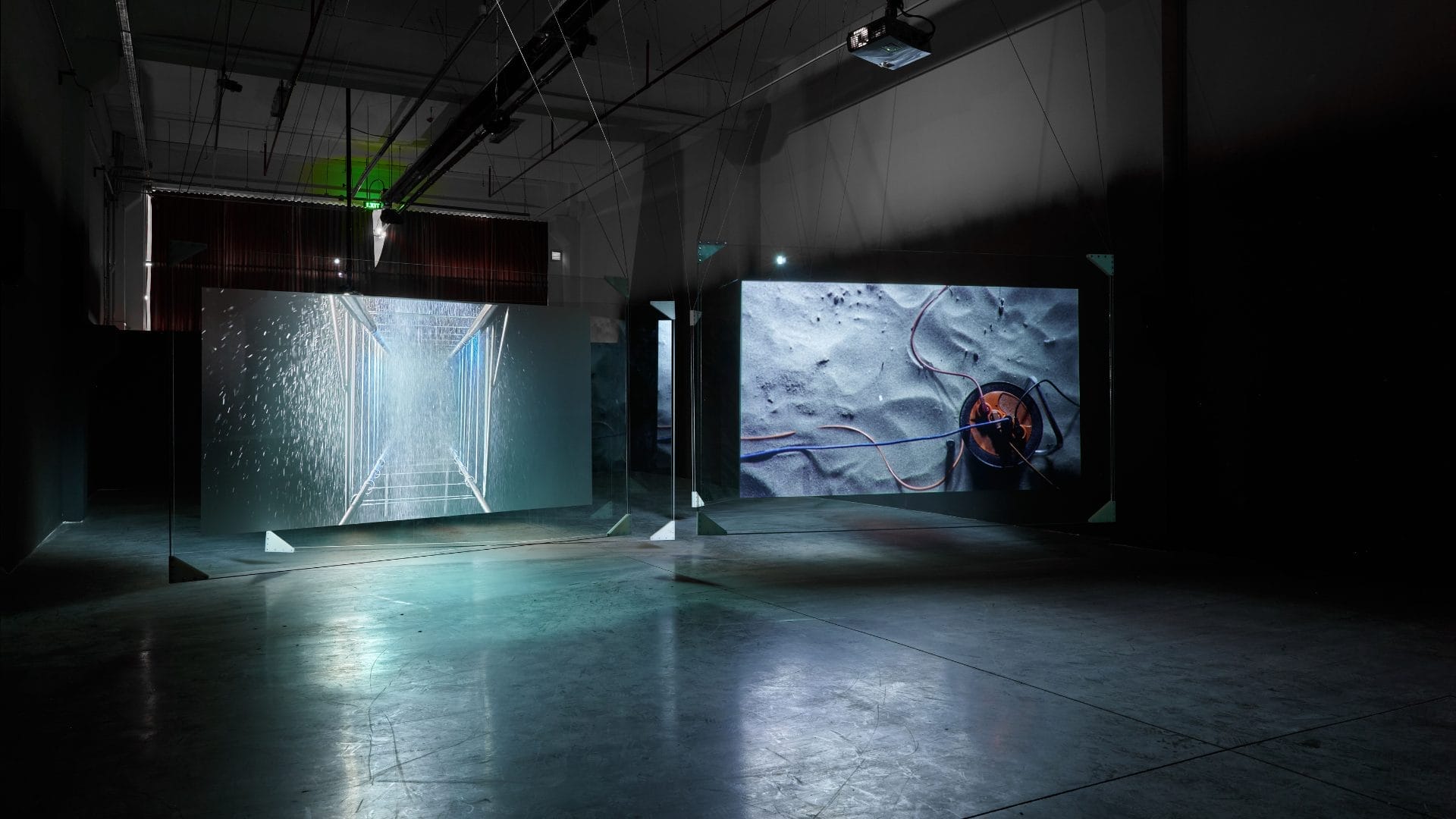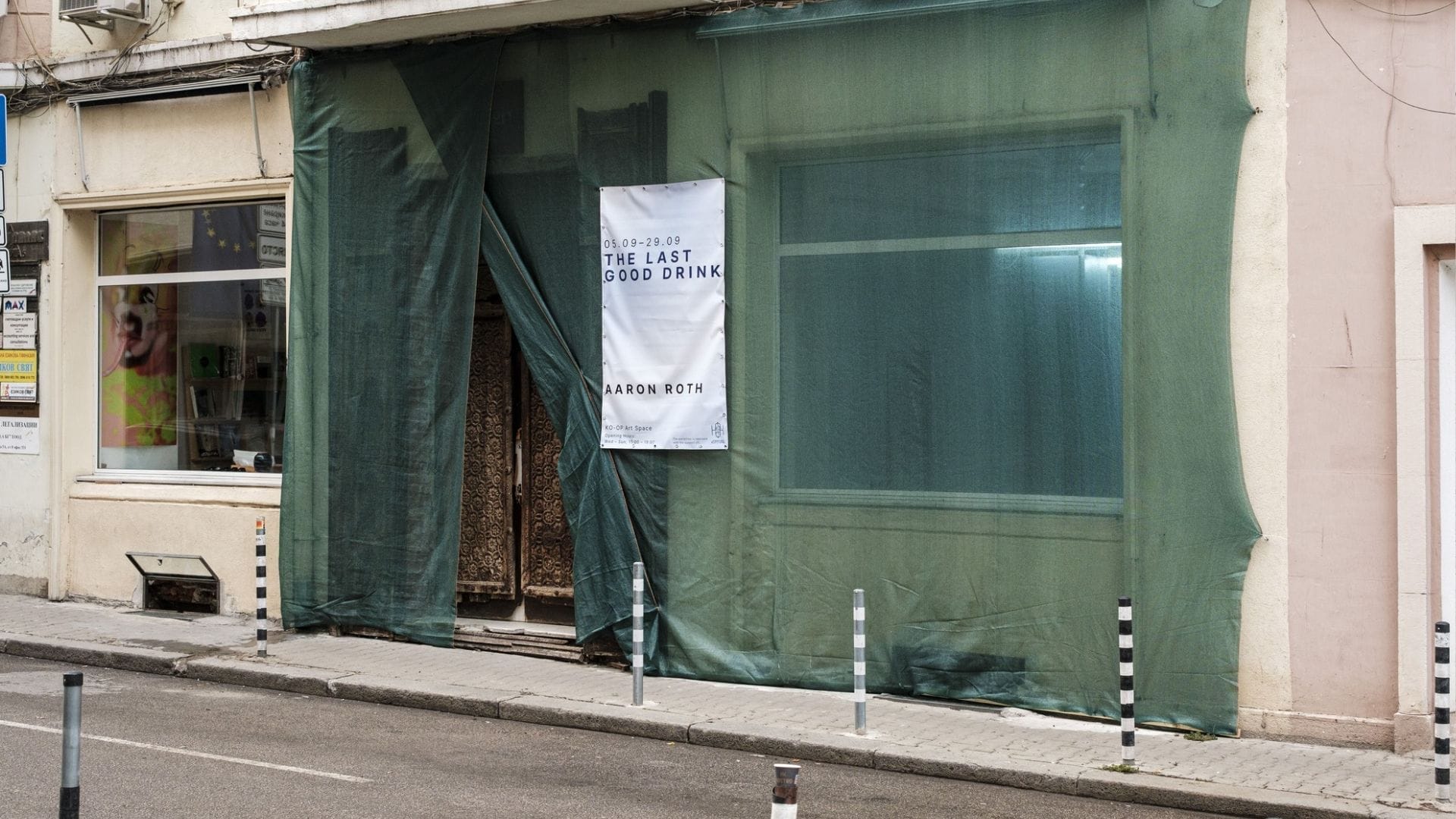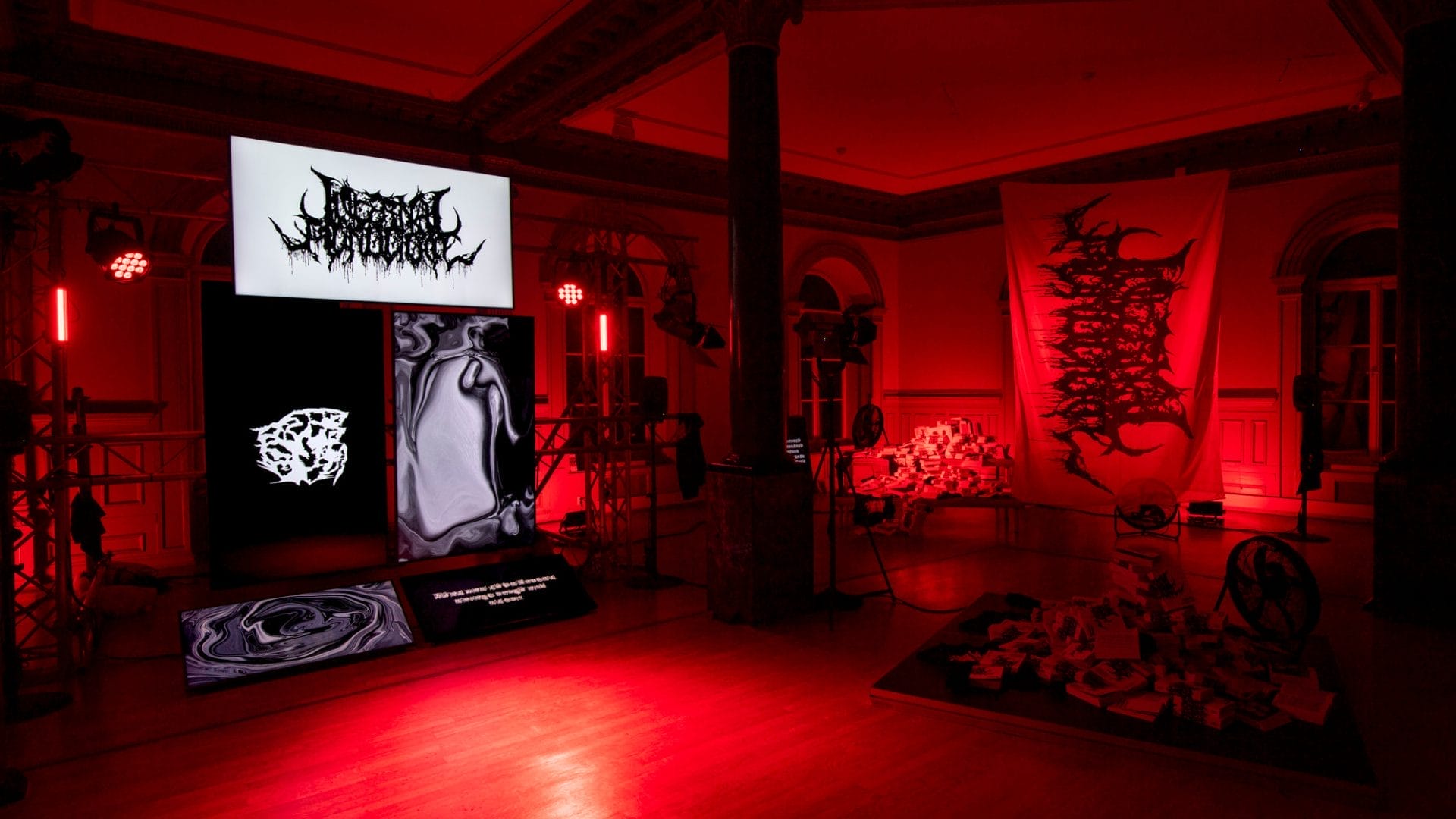
Samuel Brzeski, Infernal Monologue at Kunsthall 3,14, Bergen
Infernal Monologue by Samuel Brzeski, curated by Malin Barth, at Kunsthall 3,14, Bergen, 17.01.2025–13.04.2025.
Exhibition text:
An overwhelming amount of information bombards us across every channel. The sheer volume of texts and voices in the networks that surround us combine into a mass of moving language. This living body of utterances and writings flows forth from podcasts and status and updates and broadcasts and group chats and apps and airpods. There is a lot of noise – a lot of speaking – without saying anything. What lies beneath the so-called common sense, in the swirls of language, in the undertones of what is said? Infernal Monologue by Samuel Brzeski is a cacophonous scream from the entrancing machinery of everyday life. The total installation, created for Kunsthall 3,14, erupts from the fractures of automated contemporary culture, where meaning has been washed out by excess, bored to death by routines, and repeated into nonsense.
The exhibition is part of Samuel Brzeski’s ongoing research into the political and poetic dimensions of negation and nonsense, particularly within various religious, self-help, and countercultures, and the broader context of neoliberal capitalism. How can the stuck patterns of language be broken free through acts of refusal and negation, to create new forms of vibrational meanings? The main hall of Kunsthall 3,14 is crowded with screams and hoarse whispers. Black metal howls and speaking in tongues occupy the space. These voices speak without words and turn away from the obvious patterns of the ordinary, becoming acts of refusal against dominant structures. The violent sounds of the installation arise from negation, the flipside of the orderly and habitual. Communication is often—if not always—coloured by unintentional gaps, pauses, and sighs, which shift meanings toward the unanticipated. These sounds and gestures make audible the passions and desires behind the automated human machinery. They might give us away, revealing the hidden urges of people, markets, and politics. The flipside of the established and comfortable might echo impending doom.
In the centre of the room stands an architecture of screens, with theatrical construction and stage lighting. The form of the screens is inspired by French sculptor Auguste Rodin’s bronze sculpture The Gates of Hell (1880–1917). Rodin initially created this work as a negative of Lorenzo Ghiberti’s Gates of Paradise (1425–1452). Rodin’s sculpture depicts a scene from Dante Alighieri’s descent into hell, from The Inferno, the first part of The Divine Comedy. When making this monumental work, Rodin was particularly struck by Dante’s warning over the entrance to hell: “Abandon all hope, ye who enter here.”
The multi-channel sound composition blends Samuel Brzeski’s vocals with those of Black Metal artist BAPHY (Thea Ossum). In addition to meaningless non-words everywhere in language, Brzeski and BAPHY worked with transcribed material from religious glossolalia (speaking in tongues) and New Age spiritual light language to improvise their vocal scores. In various religions, it is believed that one can communicate with God through the practice of speaking in tongues, sometimes in a language previously unknown to the speaker, or through incomprehensible sounds. By speaking without thinking, in a violent flow of spontaneous words, the act can unite the believer with God. New Age spiritual light language, regarded as a healing practice, communicates with the soul and is believed to connect the practitioner with higher realms of consciousness. The two acts of speaking without words—the black metal vocalisations and speaking in tongues—are relatively similar in their negation of language, abstraction of meaning, and consonant-driven enunciation. Both turn away from the contemporary machine, where life can always be measured and controlled. In the sound composition, the language of the church and black metal overlap as the two voices are overlaid to create a sonic atmosphere—a vocal texture rather than a signifier. The rhythm of the sound installation is punctuated by shifts in the video installation, changes in lighting states, and the activation of droning fans, a nod to biblical references of experiences of wind before acts of speaking in tongues commences.
On the screens appears text that has been translated into a completely illegible typeface, specially commissioned for the project. Letters are warped and corrupted, twisted into unreadable scribbles. Their forms are visually inspired by the illegible styles of Black Metal logos. A logo of the exhibition’s title, Infernal Monologue, flies on a flag outside the exhibition, appears on video screens, is printed on band t-shirts strewn around the exhibition space, and appears on the cover of the 666 copies of the Infernal Monologue Exhibition reader. The book, which is 666 pages long—the number of the beast—contains theoretical and conceptual material on which the project is based, translated into the illegible forms. These incomprehensible signs cannot be explained with simple words or rationalised with reason but felt as an irritating itch in the throat, a flicker on the screen, or a rattle in the stereo. While it is deeply human to follow what one already knows—common sense without reflection and the glossy language of the comfortable—the discrepant undertones that were always there might eventually bite back.
Samuel Brzeski (b.1988) is an artist, writer and publisher originally from London but based mostly in Bergen, Norway. He works with language as raw material—moulding, stretching and transforming texts on screens, on the page and through sound. Brzeski studied English Literature at University of Sheffield (UK), and Fine Art at Bergen Art Academy (NO). He has participated in the Maumaus Independent Study Program (Lisbon) and Mountain School of Arts (Los Angeles). Exhibitions and performances include The Norwegian National Museum (Oslo), Lydgalleriet (Bergen), Pachinko (Oslo), Bærum Kunsthall, bb15 Space for Contemporary Art (Linz), Meta.Morf—Biennale for art and technology (Trondheim), Black Box Theatre (Oslo), and Chao Art Centre (Beijing). Residencies include Contemporary Art Stavanger Art Writing Residency, Bas Fisher Invitational (Miami) and The Creative Europe Oscillations Program. He runs the publishing presses TEXST and Vibrational Semantics. In 2025, Samuel is a participant in the Jan van Eyck Post-Academic Residency (Maastricht).
Curated by Malin Barth
Additional Vocals — BAPHY (Thea Ossum)
Typeface Design — Ben King
Logo design — Ben King / Gerrit Rijken
Technical Advisor — Antoine Hureau
Advisors — Robin Everett, Svenja Beller
Assistant — Thanee Andino
Technical Support — Carte Blanche, Lydgalleriet, The Art Academy (UiB), BEK—Bergen Centre for Electronic Arts, BIT Teatergarasjen
Funders – Arts Council Norway, Norwegian Visual Artists Fund (BKV), Bergen City, Kunstsentrene i Norge
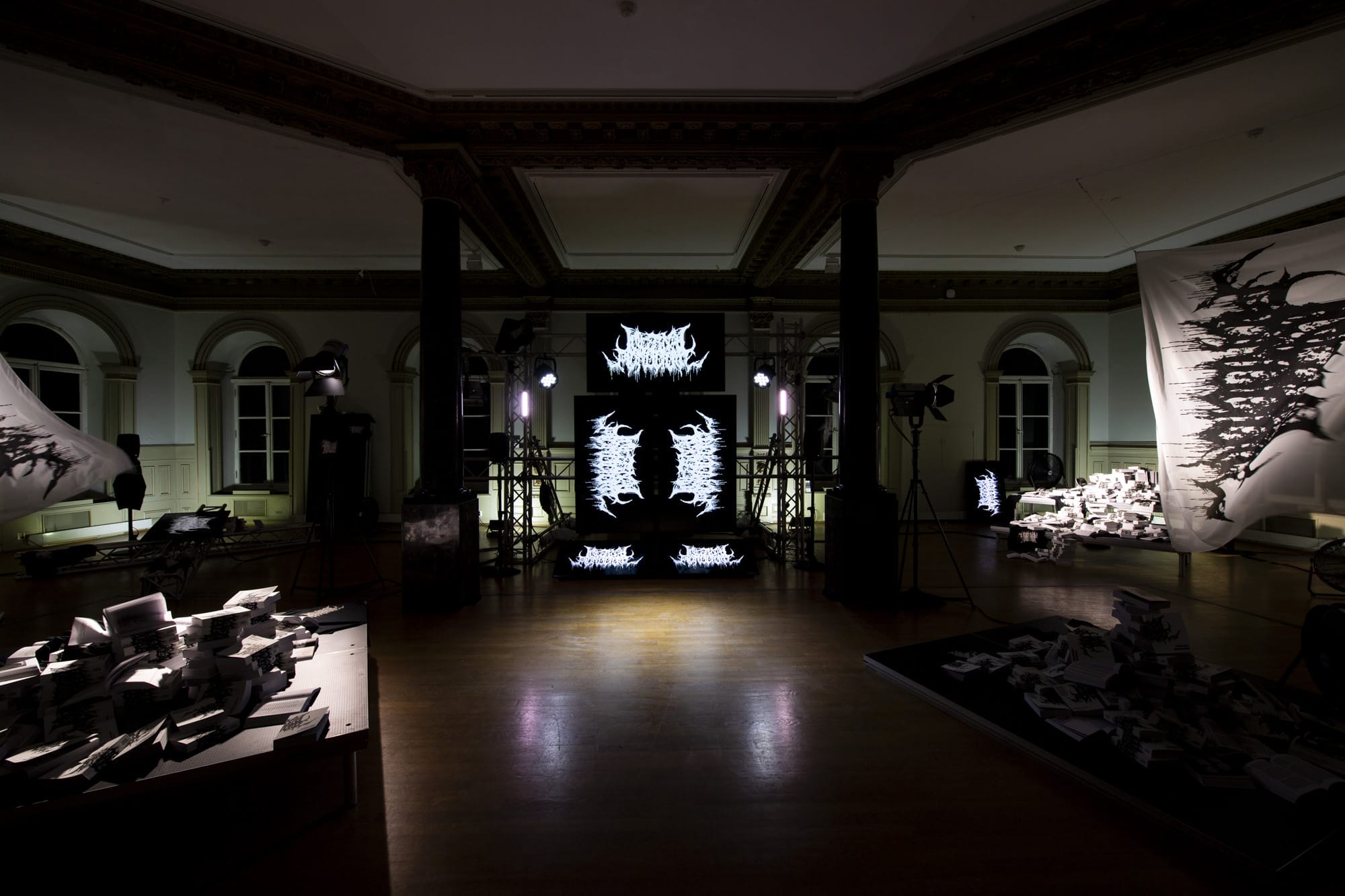
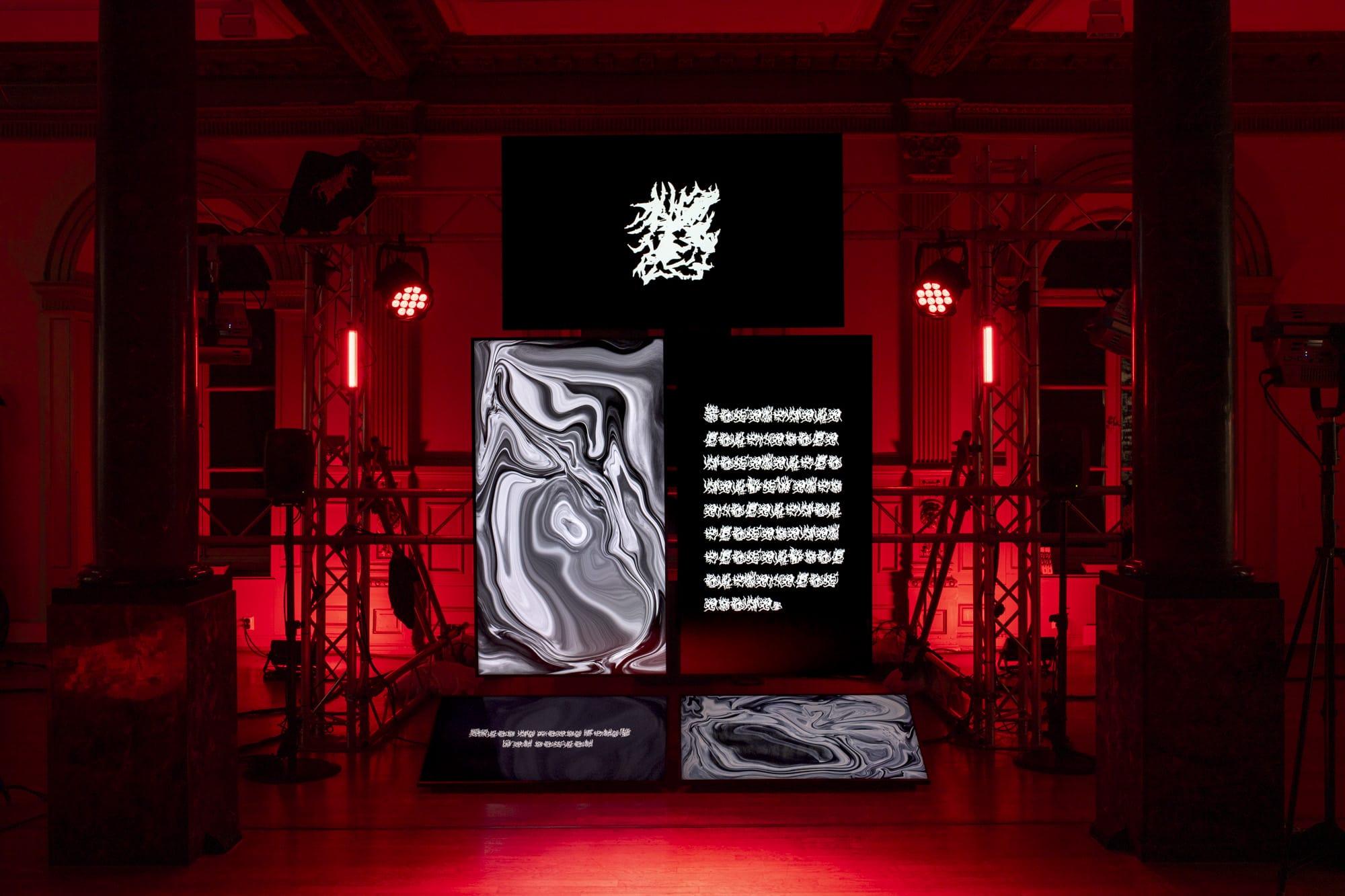
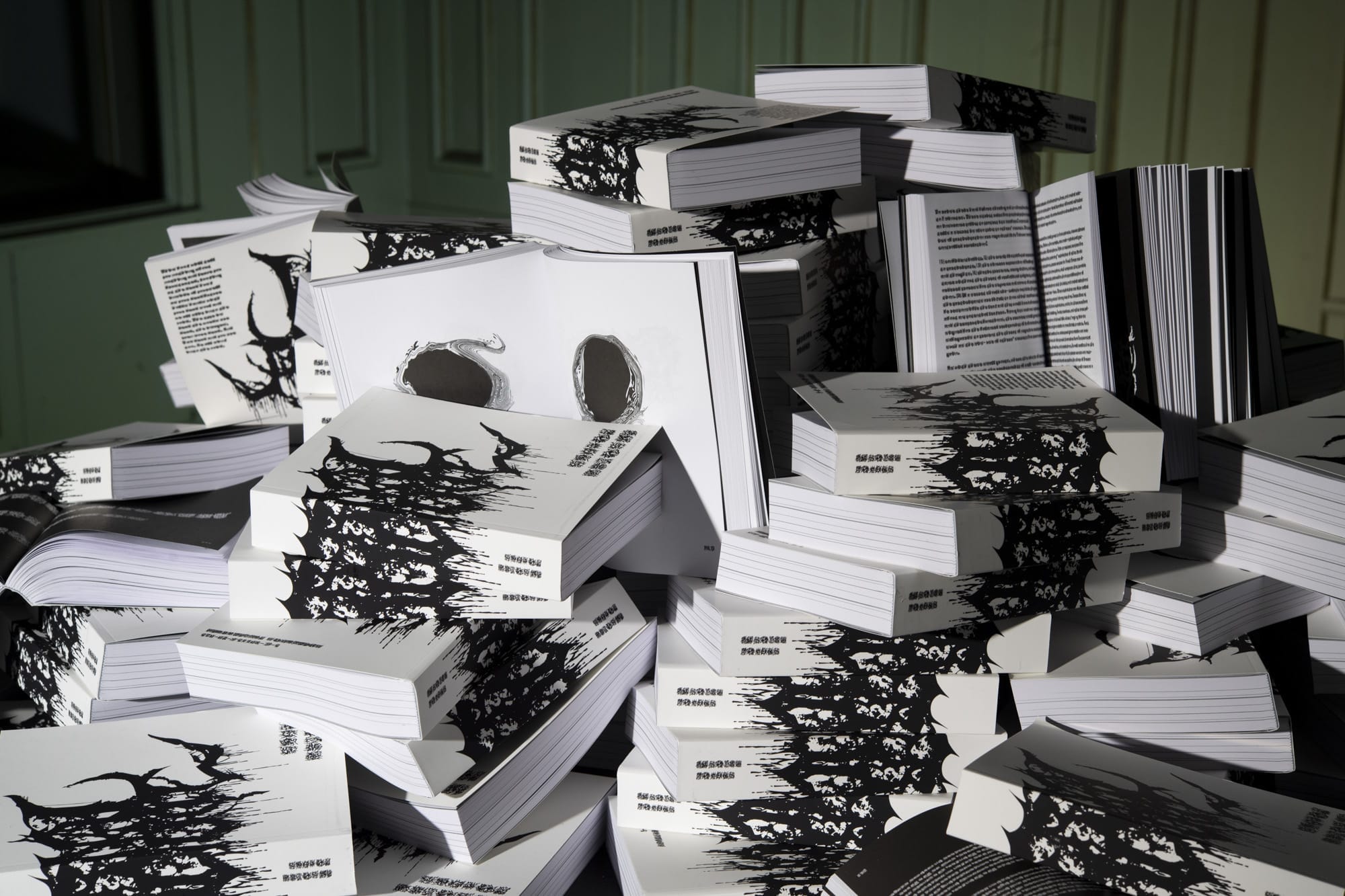

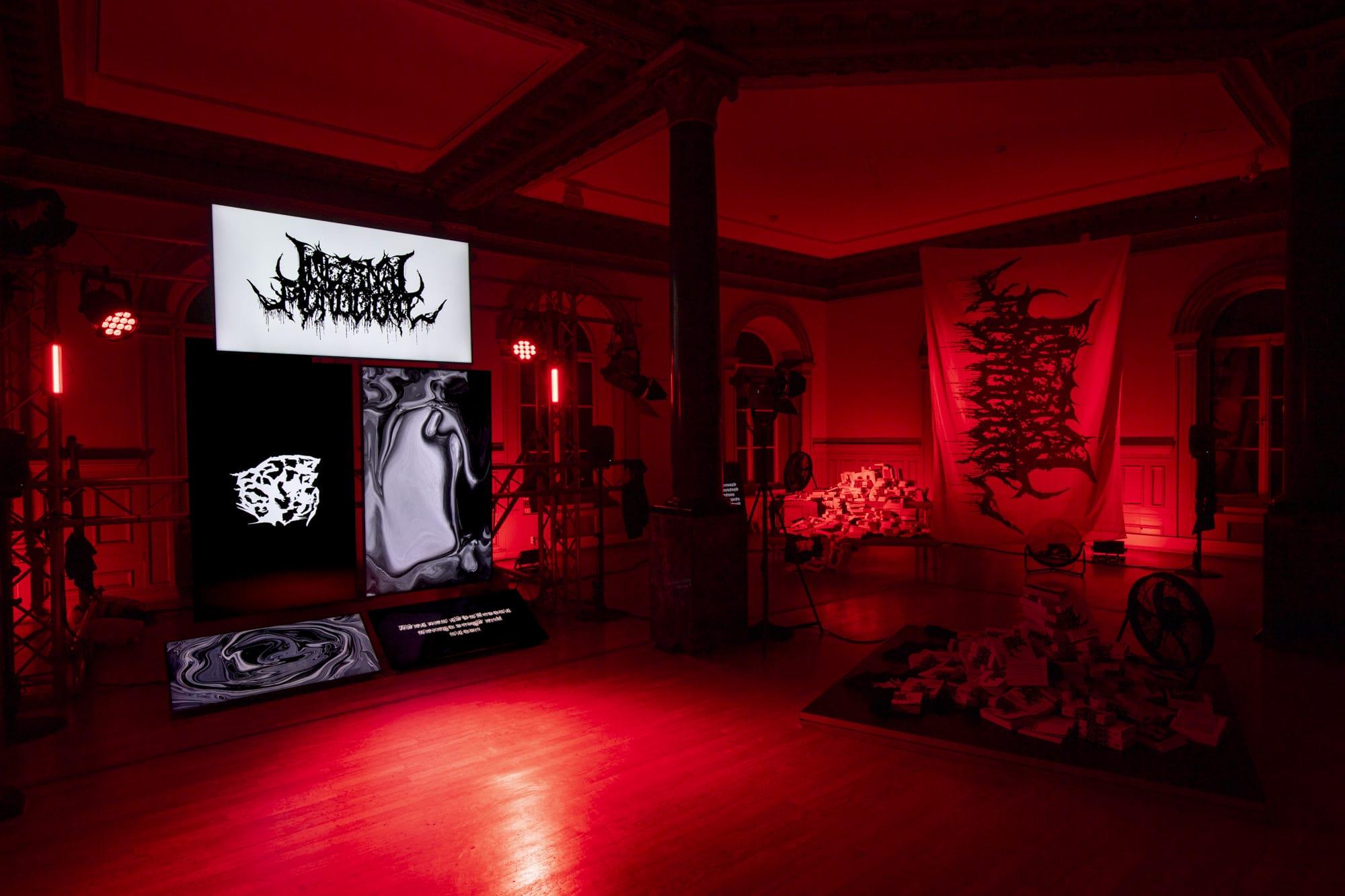
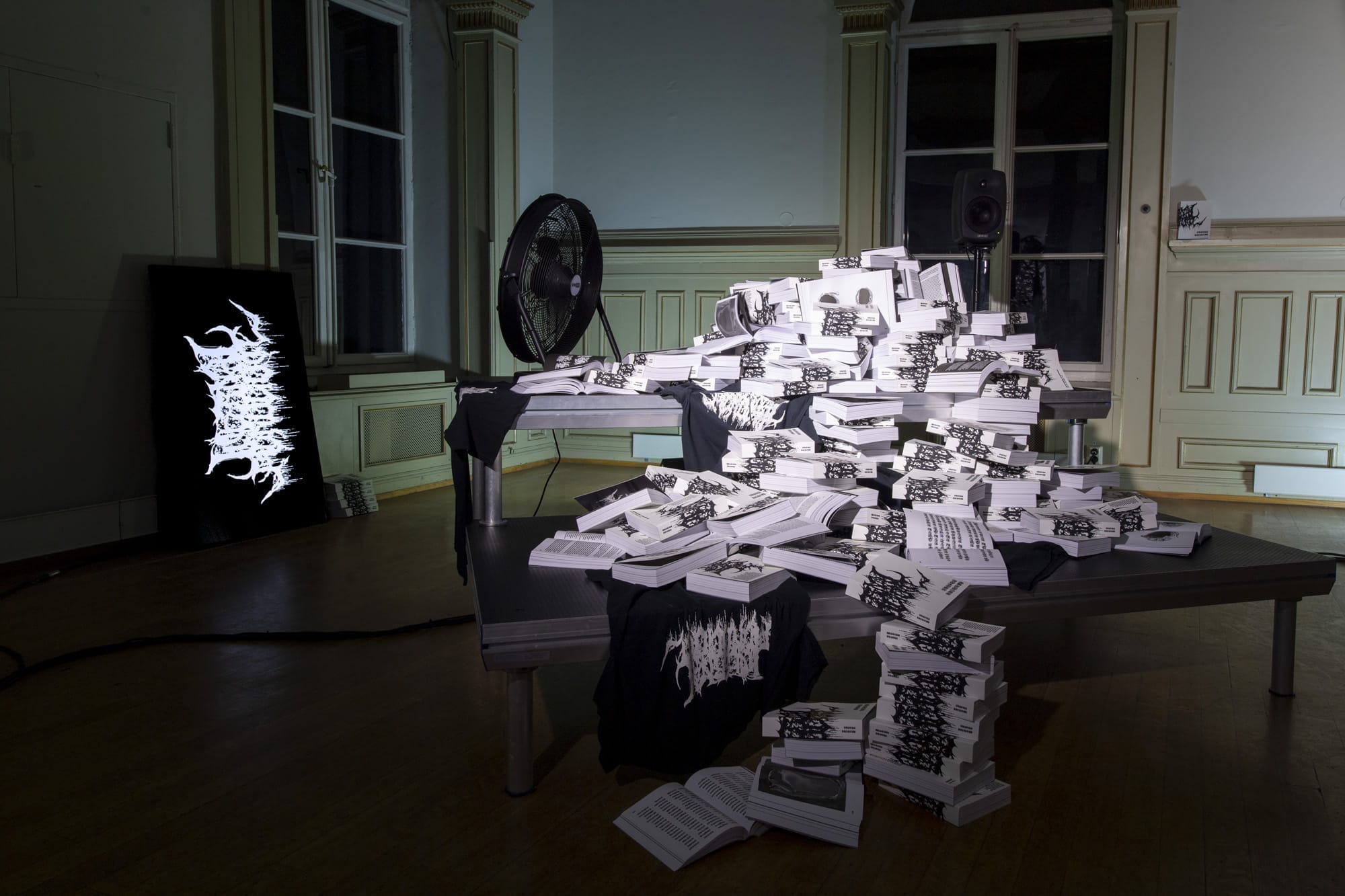



fakewhale
Founded in 2021, Fakewhale advocates the digital art market's evolution. Viewing NFT technology as a container for art, and leveraging the expansive scope of digital culture, Fakewhale strives to shape a new ecosystem in which art and technology become the starting point, rather than the final destination.
You may also like
Balenciaga and Juergen Teller: Urban Landscapes as Art in “This is a Balenciaga Campaign”
In an era where fashion increasingly merges with art and design, Balenciaga has once again captured
Burak Kabadayi, “Whether it’s a desert or not is irrelevant,” at IMALAT-HANE, Bursa.
“Whether it’s a desert or not is irrelevant” by Burak Kabadayi, curated by Deniz K
Aaron Roth, “The last good drink” at Ko-Op Sofia, Sofia
“The last good drink” by Aaron Roth, curated by Vasil Vladimirov, at Ko-Op Sofia, Sofia,

